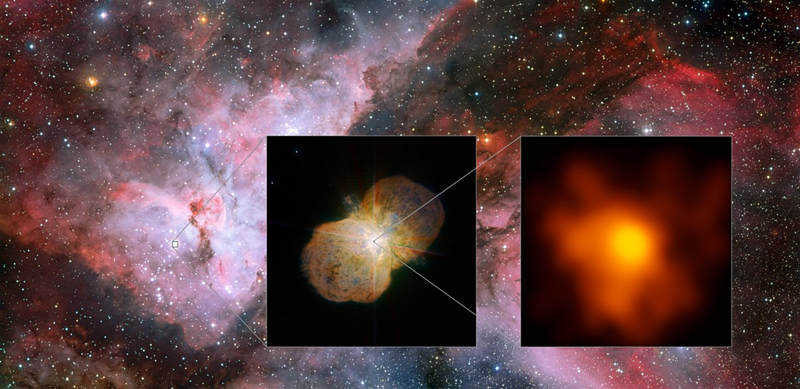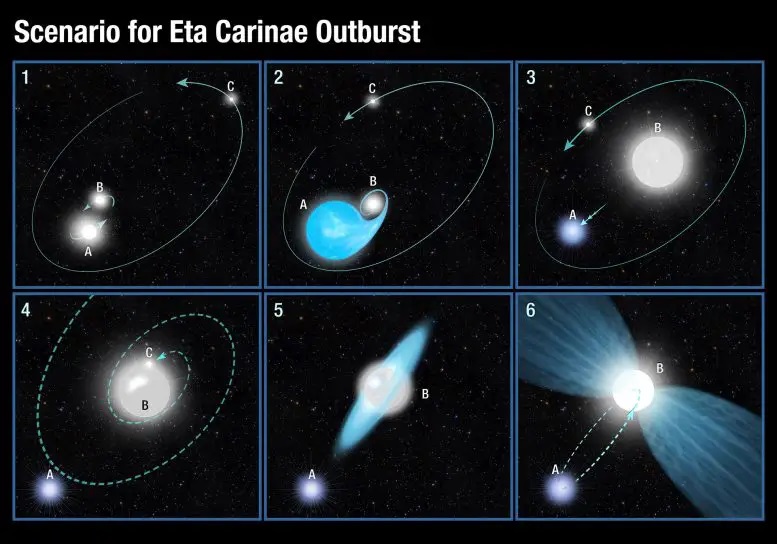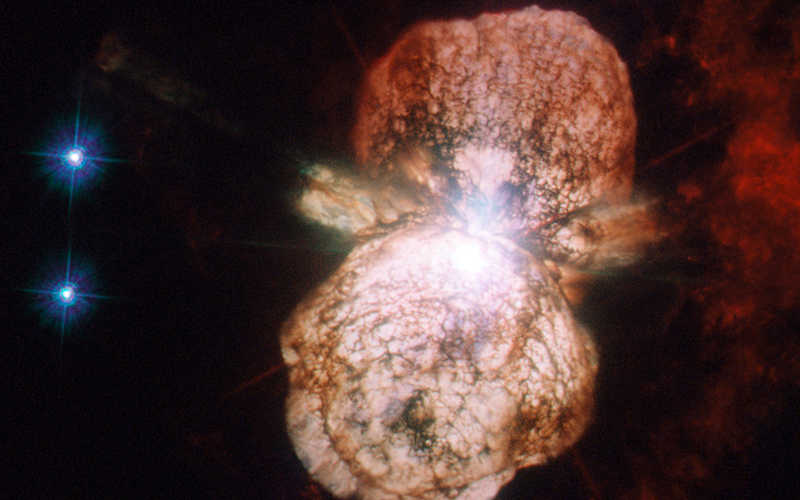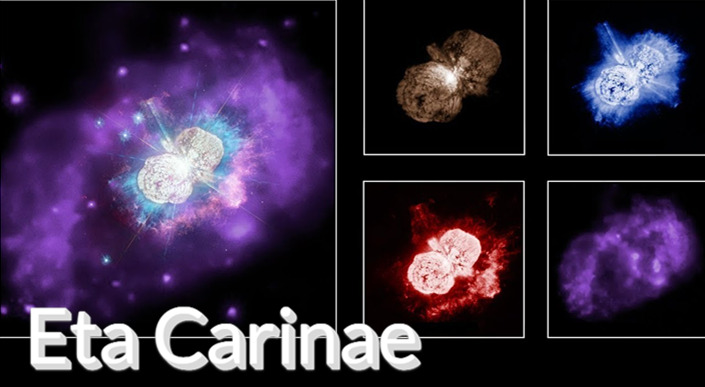The Eta Carinae is one of the brightest known stars in the Milky Way galaxy. This binary star system is located within the Carina Nebula, approximately 7500 light-years away from Earth, which is a vast region visible in the southern night sky and known for stellar formation. About 170 years ago, astronomers witnessed a massive stellar explosion, releasing energy nearly equivalent to that of a typical supernova. Surprisingly, unlike other stars that often perish in violent explosions, Eta Carinae survived this explosion.
According to two research papers published in the August 2 issue of the Monthly Notices of the Royal Astronomical Society, a group of astronomers led by Nathan Smith from the University of Arizona and Armin Rest from the Space Telescope Science Institute conducted modern astronomical investigations. They used ground-based telescopes to re-measure various parameters related to the Eta Carinae explosion from the 1840s, which reached the Earth with a delayed light echo. Their significant discovery revealed that the material ejected during the explosion had a velocity nearly 20 times faster than what astronomers had estimated. This sets a record for the fastest material ejection from a supernova explosion observed by humans. Typically, massive stars produce a relatively slower and gentler stellar wind before they die.

To explain this unusual phenomenon, they inferred that Eta Carinae might have originally been a three-star system. Based on the observational data, researchers proposed the hypothesis that the eruption was triggered by a prolonged dynamic interplay between three neighboring stars, resulting in the destruction of one of the stars and the formation of a new binary star system with the remaining two stars. Astronomers speculate that this climax of stellar interactions might have been an incredibly violent stellar explosion, with Eta Carinae consuming one of its companion stars and propelling material equivalent to ten times the mass of our Sun into space. This ejected material formed a massive bipolar structure, which is the dumbbell-like shape visible in today’s images.

Following the diagram, the theory unfolds in six steps:
- Eta Carinae initially began as a three-star system, with two massive stars, A and B, orbiting closely, while a third companion star, C, orbited on a more distant trajectory.
- When the more massive star, A, neared the end of its life, it began to expand and dumped most of its mass onto its smaller sibling star, B.
- As star B expanded to about 100 times the size of the Sun and became extremely bright, the mass transfer process disrupted the gravitational balance in the system, causing star A, which was now left with only a helium core, to move away from the now-giant star B.
- The helium core of star A came close to the outer layers of star C and interacted gravitationally, pulling it into the gravitational interplay. These two stars swapped positions, and star C was propelled inward.
- Star C moved inward and interacted with the enormous star B, forming a circumstellar disk of material around the giant star.
- Eventually, star C merged with the massive star B, leading to an explosive event. The vast amount of material ejected from star B formed a bipolar structure. Meanwhile, the surviving star A was placed on an elongated orbit around the merged binary system. Every 5.5 years, it passes through the gaseous outer space around the giant star, creating shockwaves detectable by humans in the form of X-rays.
The researchers anticipate that gaining a better understanding of the physics and principles behind the Eta Carinae stellar explosion could help uncover more mysteries related to complex interactions in binary and multiple star systems in the future. This information is crucial for understanding the evolution and demise of massive stars.

END:
As we delve into the secrets and evolution of Eta Carinae, we have taken a crucial step. However, this star remains a complex and captivating celestial object, and its future holds both challenges and opportunities.
As we continue our in-depth research, we hope to gain a more comprehensive understanding of the physical processes and dynamic effects of Eta Carinae. This will aid us in better comprehending the evolution and ultimate fate of massive stars, as well as the mysteries of complex interactions between celestial bodies in binary systems. Furthermore, we may employ new observational tools and techniques to continuously monitor Eta Carinae, capturing its future developments and any potential changes.
With the passage of time, we can anticipate more astonishing discoveries about Eta Carinae, which will not only expand our knowledge of the cosmos but also provide further insights into the lifecycle of stars and the nature of various celestial objects in the universe. Eta Carinae will remain a captivating target for scientists and researchers, unveiling the mysteries of the universe.
More UFOs and mysterious files, please check out our YouTube channel: MysFiles
Two Incredible Pyramid Discoveries In 2023 – Mysterious Chamber and Pyramids in Jungle








